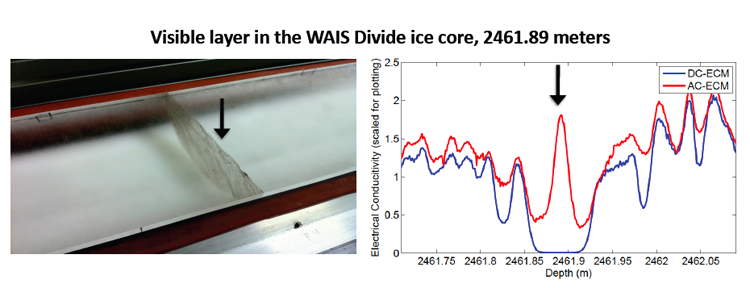News
Field and CPL Updates
2011 Core Processing Line

In our last week of work before a planned vacation the week of July 4th, we managed to process 136 meters of core. This brings our current depth to 2530 meters, just shy of the last ice drilled during the 2009-2010 drilling season.
We saw dozens of cloudy layers in the ice this week, as well as some distinct ash layers. There is a band of heavy volcanism, or a visible layer rich section of core, spanning 100m in the ice around 2500 meters, which we hypothesize relates to the "Old Faithful" radar layer seen across the West Antarctic Ice Sheet. We do not yet have an updated age count for this depth, but it is approximately 17,500 years before present based extrapolation from the Byrd ice core.
Our visiting scientist this week was Joe McConnell (DRI), who shared some aerosol data from the WAIS Divide core. Once again, it's been a pleasure to see so many of our PIs at the lab this summer.
Attached to the update this week is a "science-tidbit" from TJ Fudge (UW). We've been excitedly watching the electrical conductivity measurements as we cross potential volcanic layers - here is the first for your viewing and educational pleasure.
As we approach the halfway mark of the 2011 CPL, I want to thank everyone involved for their hard work, attention to detail, and participation from near and far. Spirits are high here, though I think this week off will be healthy for all. Happy 4th of July to all of those in the States - I hope you all have a great holiday weekend with friends and family.
Peter Neff
WAIS Divide SCO Representative, 2011 CPL

